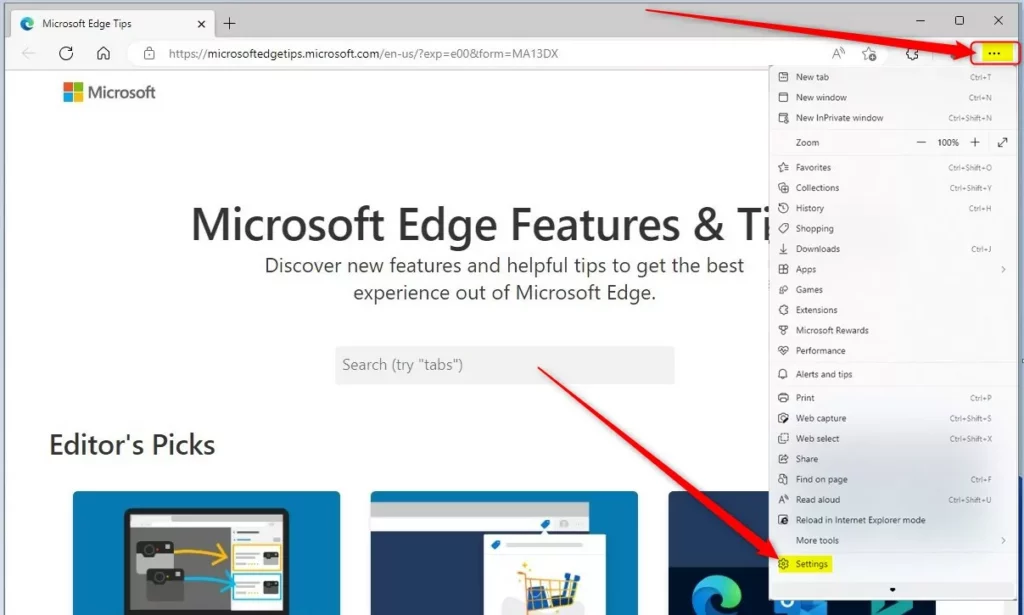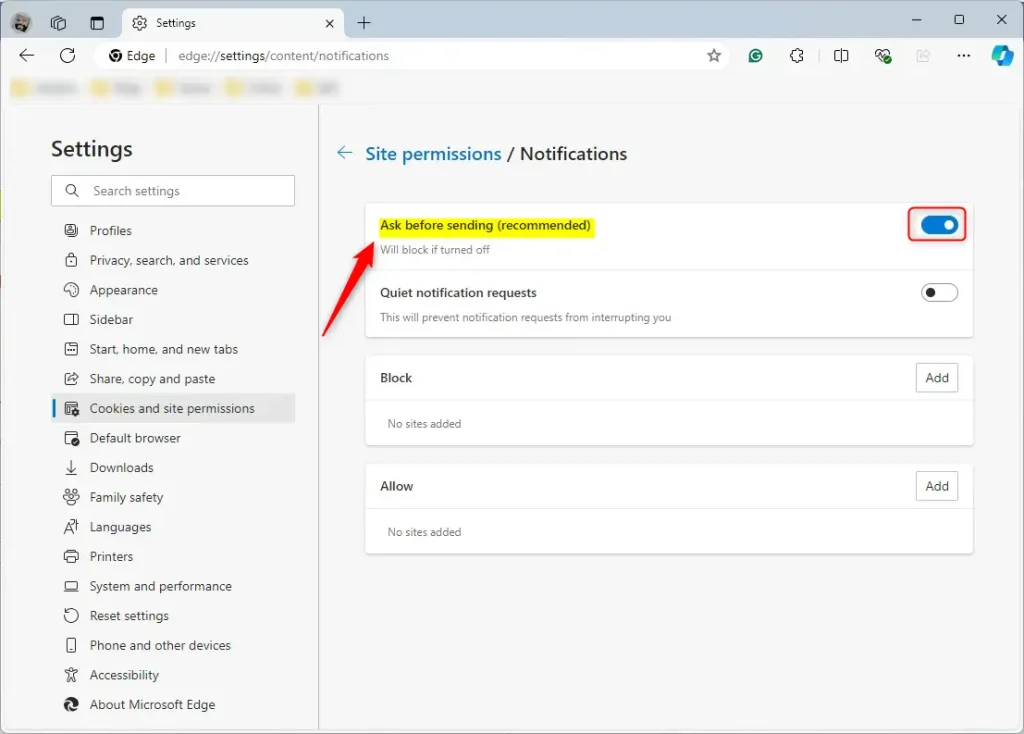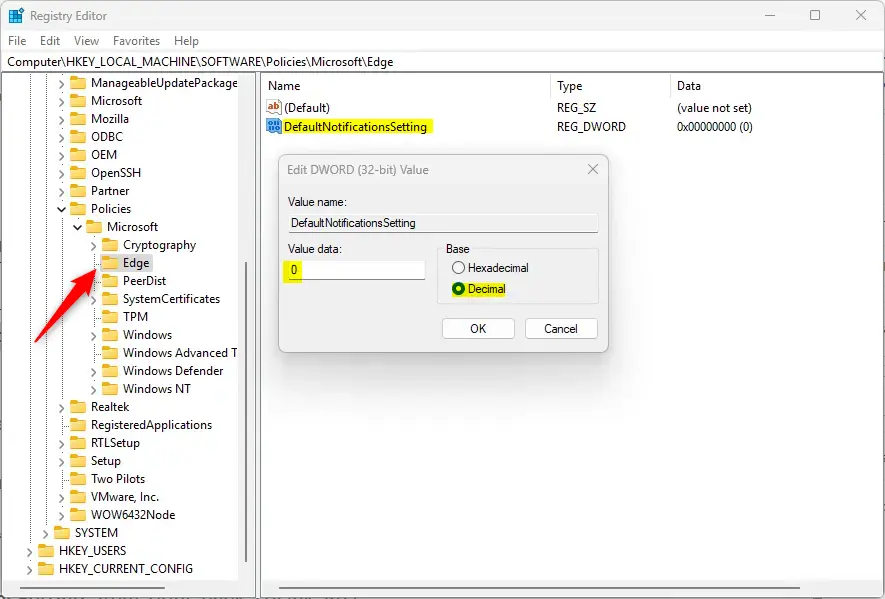This article explains how to enable or disable push notifications for sites in Microsoft Edge.
Microsoft Edge is the default browser in Windows 11. However, users can switch to their preferred or favorite browser anytime. Edge is based on Chromium, similar to Google Chrome and other Chromium-based browsers today.
Push notifications alert users about updates, news, or other relevant information from the website. When you visit a website that supports push notifications, you may see a prompt asking if you want to allow the website to send you messages. If you allow it, you will receive push notifications from that website.
Microsoft Edge will automatically block notifications for a website if you dismiss or ignore the requests 3 or 4 consecutive times respectively.
Enable or disable push notifications in Microsoft Edge
As mentioned above, users can configure Edge to enable or disable website push notifications.
Here’s how to do it.
First, open the Microsoft Edge browser.
Then click on the Settings and more (Alt+F) three horizontal dots button at the top right corner and select Settings.

On the Settings page, click “Cookies and Site permissions” on the left panel, and select the “Notifications” tile on the right under the “All permissions” section.

On the “Notifications” settings page, select the “Ask before sending (recommended)” tile. Then, toggle the switch button to the On or Off position to enable or disable the feature.
- Turning off Ask before sending will block web push notifications for all sites.
- Turning on Ask before sending will have sites ask to show push notifications by default.
- Use the Allow and Block to add sites to the Allow or Block list.
Under ‘Allow‘, you’ll see a list of sites currently allowed to send notifications. Click the three dots next to the site you want to stop receiving messages from and select ‘Remove‘ or ‘Block‘.

Close the Settings page when you are done.
Enable or disable push notifications using Windows Registry Editor
Another way to enable or disable the push notifications feature in Edge is to use the Windows Registry Editor.
First, open the Windows Registry editor as administrator.
Then, navigate to the registry key below.
Computer\HKEY_LOCAL_MACHINE\SOFTWARE\Policies\Microsoft\Edge
Next, double-click the DefaultNotificationsSetting (REG_DWORD) name on the Edge key’s right pane to open it.
Then, use the table below to configure the push notifications settings for all users.
- Type
0to allow push notifications for all users. - Type
2to block push notifications for all users. - Type
3to force “Always ask push notifications” for all users.
If you do not see the “DefaultNotificationsSetting” item, right-click a blank area and create a new DWORD (32-bit) registry item.
Then, type the name “DefaultNotificationsSetting” and enter 0, 2 or 3 to set the push notifications for all users.

To restore the default behavior and continue to allow users to manage their push notifications, delete the “DefaultNotificationsSetting” item created.
You may have to reboot your computer to apply the changes.
That should do it!
Conclusion:
- Configuring push notifications in Microsoft Edge allows users to control their browsing experience.
- Users can enable or disable push notifications for individual or all websites.
- The Windows Registry Editor provides an alternative method to manage push notifications for all users.
- Understanding these options empowers users to customize their notification preferences based on their browsing habits and preferences.

Leave a Reply